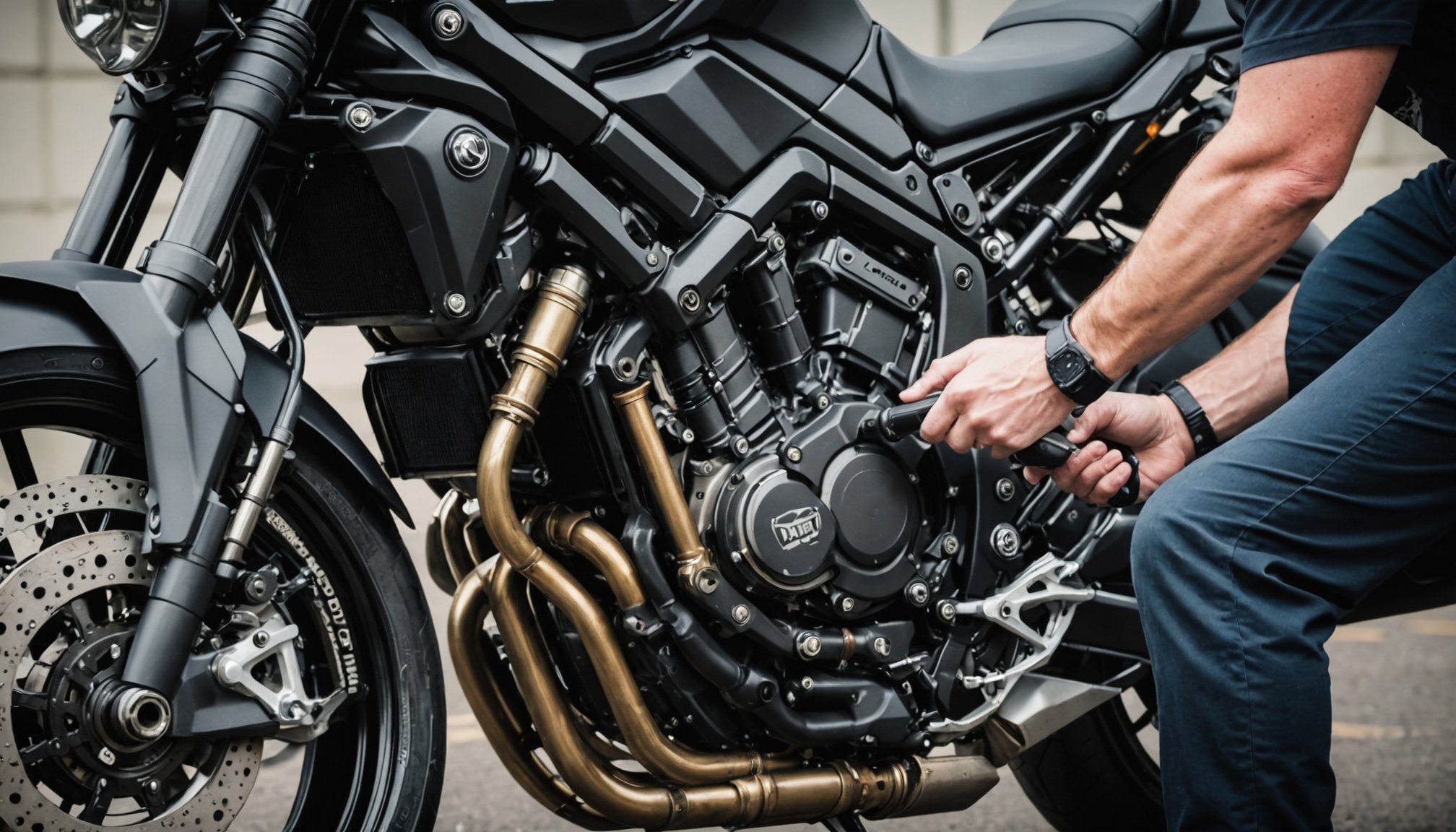The Yamaha MT-09 has long been a favorite among motorcycle enthusiasts for its powerful performance and agile handling. However, to get the most out of this bike, it’s crucial to adjust the rear shock preload correctly. But what exactly does this entail, and why is it significant? In this article, we will delve into the proper technique for adjusting the rear shock preload on a Yamaha MT-09, ensuring you achieve optimal performance and comfort for your ride.
Understanding Rear Shock Preload
Before we dive into the how-to, let’s take a moment to understand what rear shock preload is and why it matters. The rear shock preload adjusts the initial compression of the rear shock spring. By doing so, you set the bike’s ride height and affect its ability to absorb bumps and maintain stability. Incorrect preload settings can lead to poor handling, increased wear and tear, and a less enjoyable riding experience.
In parallel : What are the best practices for maintaining the cooling system on a Ducati Multistrada 1200?
The preload adjustment affects the bike’s suspension and ride height, which can either enhance or detract from your riding experience. Adjusting the preload correctly ensures that the suspension works within its optimal range, improving both comfort and handling. For the Yamaha MT-09, this adjustment becomes even more critical given the bike’s sporty nature and performance-oriented design.
Tools You’ll Need for the Job
To adjust the rear shock preload on a Yamaha MT-09, you’ll need a few essential tools. Having the right tools ensures the process is straightforward and reduces the risk of damaging your bike. Here are the key items:
Have you seen this : How do I install crash bars on a BMW R1250GS for added protection?
- Spanner wrench: Specifically designed for adjusting motorcycle shocks.
- Torque wrench: Ensures bolts are tightened to the manufacturer’s specifications.
- Lift or paddock stand: To safely raise the bike off the ground.
- Owner’s manual: To reference specific torque settings and adjustment recommendations.
- Tape measure: For precise measurements.
Having these tools ready will streamline the adjustment process, allowing you to focus on the task at hand. With everything in place, you’re set to start adjusting the rear shock preload on your Yamaha MT-09.
Initial Preparations: Setting Up Your Work Area
Adjusting the rear shock preload isn’t complicated, but it does require a bit of preparation. Here are the steps to set up your work area and make sure you’re ready to proceed.
Ensure Safety First
Safety is paramount. Before you start, make sure your bike is on a stable surface. Using a lift or paddock stand can provide the necessary stability and access to the rear shock. Double-check that the bike is secure and won’t tip over during the adjustment process.
Consult the Owner’s Manual
Every bike is a bit different, and the Yamaha MT-09 is no exception. Your owner’s manual will have valuable information, including the recommended preload settings and torque specifications. Keep it handy for quick reference.
Measure the Sag
Sag is the amount the bike settles under its own weight and the rider’s weight. Measuring sag before and after the adjustment will help you gauge how much to adjust the preload. Here’s a quick method:
- Measure the distance between the rear axle and a fixed point on the frame with the bike on the stand (unladen sag).
- Measure the same distance with the rider on the bike (laden sag).
- Aim for a laden sag of about 30-35mm for street riding.
Gather Your Tools
Have your spanner wrench, torque wrench, and tape measure within reach. Ensuring all tools are accessible will make the adjustment process smoother and more efficient.
With your work area set up and all preparations in place, you’re now ready to proceed to the actual adjustment of the rear shock preload.
Step-by-Step Guide to Adjusting the Rear Shock Preload
Now that everything is set up, it’s time to get into the nitty-gritty of adjusting the rear shock preload on your Yamaha MT-09. Follow these steps carefully to ensure a precise and effective adjustment.
Step 1: Loosen the Locking Ring
Start by locating the rear shock and the preload adjustment rings. The first thing you need to do is loosen the locking ring that holds the preload adjuster in place. Using a spanner wrench, turn the locking ring counterclockwise. This will allow you to adjust the preload without resistance.
Step 2: Adjust the Preload Ring
With the locking ring loosened, you can now adjust the preload ring. Turn the preload ring clockwise to increase the preload (compressing the spring) or counterclockwise to decrease it (relieving spring tension). Make small adjustments, about a quarter-turn at a time, and check the sag measurements after each adjustment.
Step 3: Measure the Sag Again
After making an adjustment, measure the bike’s sag once more. Aim for a laden sag of about 30-35mm for optimal performance. If the sag is still off, make additional small adjustments and remeasure until you achieve the desired result.
Step 4: Tighten the Locking Ring
Once you are satisfied with the sag measurement, tighten the locking ring back into place. Use the torque wrench to ensure it is tightened to the specifications outlined in your owner’s manual. This step is crucial as it locks the preload setting and prevents it from shifting during rides.
Step 5: Test Ride and Fine-Tune
Finally, take your Yamaha MT-09 for a test ride. Pay close attention to how the bike handles and absorbs bumps. If necessary, make fine-tune adjustments to the preload until the bike feels just right. Remember, the goal is to achieve a balance between comfort and performance.
Common Mistakes to Avoid
Even with the best intentions, mistakes can happen. Here are some common pitfalls to watch out for when adjusting the rear shock preload on your Yamaha MT-09.
Over-Adjusting the Preload
One common mistake is making too large of an adjustment all at once. Small, incremental changes are more effective and easier to manage. Over-adjusting can lead to a stiffer ride and reduced comfort.
Ignoring the Owner’s Manual
Your owner’s manual is your best friend when it comes to maintenance tasks. Ignoring the specified torque settings and recommended preload ranges can result in improper adjustments and potential damage to your bike.
Skipping the Test Ride
After making adjustments, it’s tempting to skip the test ride and assume everything is set. However, real-world conditions can reveal issues that aren’t apparent in a static setting. Always take a test ride to confirm your adjustments.
Failing to Measure Sag
Accurate sag measurements are crucial for a proper preload adjustment. Failing to measure sag before and after adjustments can lead to misguided settings and a less-than-optimal ride.
Not Tightening the Locking Ring
The locking ring secures your preload adjustment in place. Not tightening it properly can cause the preload setting to shift during rides, negating your hard work. Always ensure the locking ring is tightened to the correct torque specification.
By avoiding these common mistakes, you can ensure a smoother and more effective preload adjustment process, leading to a better riding experience.
Adjusting the rear shock preload on your Yamaha MT-09 is more than just a routine maintenance task. It’s an art that, when mastered, can significantly enhance your riding experience. By understanding the importance of preload, gathering the right tools, setting up your work area, and following a step-by-step process, you can achieve optimal performance and comfort.
Remember, the key lies in making precise adjustments and taking the time to measure and test. With the right approach, you’ll find that your Yamaha MT-09 handles better, absorbs bumps more efficiently, and offers a more enjoyable ride overall. So, gear up, take your time, and master the art of rear shock preload adjustment. Your bike—and your riding experience—will thank you.











